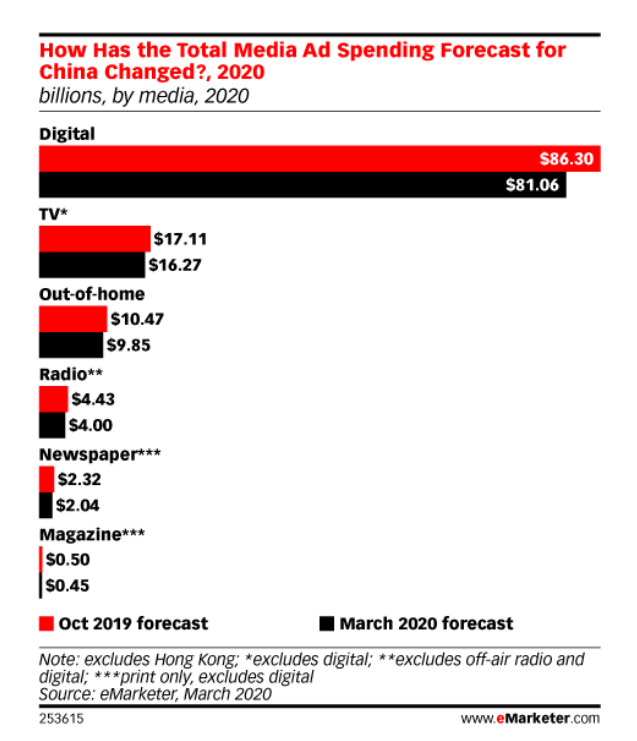Since COVID-19 began altering practically every aspect of our lives and vocations, it feels like a century has gone. No business was unaffected by the COVID-19 outbreak – and the consequences are still being calculated.
According to information published in the Proceedings of the National Academy of Sciences, about 40% of firms polled temporarily ceased operations during the pandemic. Fast forward to the present day, and the combination of increased expenditures and lost or depressed sales have wreaked havoc on the financial health of the majority of enterprises.
However, the pandemic impacted more than simply the bottom line; it caused fundamental changes in how we work. To a greater or lesser extent, every organization was compelled to reconsider its operations. And, despite several obstacles, some organizations have been able to uncover cost and productivity savings to help offset losses, take efforts to maintain a healthy creative culture remotely, and make decisions that should assist ensure long-term success and financial stability.
The pandemic is more than a medical emergency!
With so much COVID-19 information being exchanged, it’s sometimes challenging to determine critical, accurate, and valuable. Throughout the pandemic, particularly in the early days and weeks, information and instructions appeared to become outdated quickly or need continual explanation, spreading seeds of doubt and skepticism.
Both then and now, people are looking for someone with whom they can place their trust, but who?
According to the Edelman Trust Barometer for the year 2021 – which publishes an annual report on worldwide confidence in business, government, the media, and non-governmental organizations — private businesses are currently the most trusted institution.
This is reasonable. Throughout the pandemic, businesses worldwide ramped up their efforts to keep staff safe – and employed.
The COVID-19 Pandemic’s Influence on Advertising and Marketing
Numerous marketing and advertising teams will rise to the occasion, devising novel and inventive marketing tactics and techniques to guide the organization through this new normal. This entails dealing with the market disruption caused by the economic impact on all industry sectors; confronting increased competition in light of consumers’ and social “new normals”; addressing sustainability; evaluating operational options and challenges presented by strategic planning in an uncertain environment; analyzing brand reputation issues, and identifying potential new products and services.
Restaurant franchises, for example, that have been caught off guard by the demand for curbside pickup, takeout, and online ordering have already begun to adapt by reducing menus and optimizing websites, apps, and delivery partners. According to industry observers, restaurant premises may also shift, emphasizing drive-thru and pickup areas.
According to Forrester analyst Jay Pattisall, the epidemic “turned everything upside down.” Previously, branding communications were a constant, and we looked for changes in technology. Historically, technology served as a differentiation. The order of precedence has shifted. Now, technology—marketing technology, data analytics, and advertising technology—will serve as the bedrock.”
These are all the more critical because, due to COVID-19, advertising spending is projected to decline for some businesses in 2020 as stores close and income declines. For instance, one online rental property booking company recently declared that it would cease all marketing efforts in 2020 to save hundreds of millions of dollars. Other businesses have shifted their marketing investments to purpose-driven, mission-based, and cause-related marketing to better cater to consumers’ increased media consumption while working from home. For example, 45% of global consumers are increasing their time spent on social media, online video streaming has increased by 26%, online gaming traffic has grown exponentially on the servers of one telecommunications company, and the number of consumers using online food delivery and essential goods delivery has increased dramatically.
As a result, many firms may seek to optimize their marketing techniques to represent the rise in online transactions, communications, and face-to-face contact with consumers more accurately.
COVID-19 is influencing consumer behaviour and, consequently, advertising.
Wherever consumer behaviour has changed, advertising expenditures have adjusted accordingly. Advertisers have no reason to invest in media that has no audience. As global confinement measures took effect, out-of-home and movie advertising reduced almost immediately; print advertising also declined.
Meanwhile, in-home media consumption increased. While television viewing has increased, digital consumption has surged much more: the use of social networks and streaming services have expanded practically everywhere, and gaming has exploded in popularity.
Advertisers have evolved by adopting a consumer-centric approach, which prioritizes digital advertising. The online environment is conducive to “direct reaction” advertising – ones that encourage consumers to make immediate purchases – an appealing offer for firms on a budget but hoping to increase sales. Facebook and Google both reported higher first-quarter sales than expected.
Is this to say that digital-first markets are better equipped to endure the pandemic’s effects? In China, where consumers spend over two-thirds of their media time online, Tencent’s digital ad revenues climbed by 32% year over year in the first quarter. As the country reopens, its advertising market is expected to rise by 8.4% – even if COVID-19 is factored in, a figure still higher than the US’s pre-coronavirus ad growth projection of 8%.
Due to the uncertainty surrounding people’s spending and consumption habits, it’s challenging to evaluate whether China serves as a test case for the rest of the world. As Brian Wieser puts it, “one may argue that many facets of human behaviour will undergo permanent transformation.” Because the items we desire may change dramatically in the future, data that was previously utilized to inform advertising and marketing spend may no longer be helpful.”
Graph courtesy of E-Marketer
Outside of China, advertising’s lower expenditure has affected prices. Alastair Shearly-Sanders, President of Amplifi at Dentsu Aegis Network, stated, “There has been a general softening in all pricing due to the simple economics of less money in the market, whether it is exchanged through auction or not.”
Continuous Screen Time
The New York Times recently declared, based on research, what many of us already knew: that the “coronavirus has altered the way we use the internet.” Our tolerance for screen time has never been greater, and this is unlikely to alter soon.
To keep up with these shifts in consumer behavior, organizations may need to ramp up their engagement efforts. Some brands will survive the epidemic while others will perish. This suggests you may want to reconsider your strategy for organic traffic.
You’ll need to readjust your standards to reflect the new “normal” in your sector regarding organic traffic. Search Engine Journal analyzed retailer traffic from 2019 to 2020 throughout the same weeks. It discovered that although necessary merchants, such as supermarkets, saw an increase in organic traffic, “inessential” retailers, such as clothing stores, saw a decline. Every industry will face shifts in traffic, both positive and negative; marketers must plan accordingly.
What is the simplest and quickest strategy to increase organic traffic? For that, first, you need to know the fundamentals of product marketing. When individuals cannot visit brick-and-mortar establishments to evaluate things, they must establish confidence in other ways. Updating your shop or homepage, as well as responding fast to inquiries and generating proactive material that resolves concerns, can go a long way toward establishing confidence.
When we achieve our new normal, whatever that may be, one thing is sure: Consumers will return to the market. It may occur at the same rate as quarantine did. That is why firms must maintain their marketing efforts now – they must be prepared to intercept consumers once their doors reopen.




